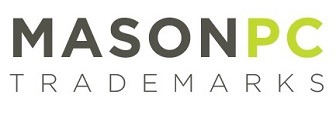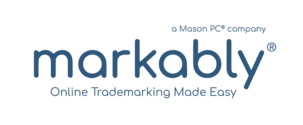Naming tips and DIY search strategies to make sure your brand is protected online
We’re in the middle of an economic crisis and for most of us, it’s been a crazy couple of weeks (stating the obvious, I know!).
But, what does this mean for your business? Is it a sink or swim situation where you’re barely holding your (figurative) head above water?
Or an opportunity that forces you to pivot, only to rise stronger than ever before, like a Phoenix from the ashes?
For many businesses running antiquated systems, the Covid-19 crisis has propelled them (rather heartlessly) into the 21st century. Where new ways to serve customers online has become more than a natural and logical evolution, but necessary to survive.
If you’re running a business like a restaurant, spa or salon, you might find it difficult to pivot into the online space, but it’s not impossible (and I’m here to help you get started!).
When I launched my online trademark registration tool, Markably, this January, I didn’t have a magical crystal ball that allowed me to see into the future and use this remarkable foresight to get ahead of the crisis. I just wanted to help other business owners register their brands and save money on legal fees. I knew most of my customers were online and that’s where they wanted their trademark lawyer to be. Plus, I wanted to make it EASY for them to register at any time of the day, no matter where they are based.
But this post is not about my pivot.
It’s about yours.
It’s about pivoting and protecting your brand.
First off, don’t panic.
You might be trying to pivot and launch your new online programs and services as quickly as possible (how about yesterday already!) to get some cashflow in these trying times.
Take a breath.
I’m here to help.
Whether you’re about to jump into a new online programme, service or even a new business launch, one thing you don’t want to overlook is the name.
You need to make sure it’s a strong name.
You also need to make sure somebody else isn’t already using it.
The last thing you need is a claim of trademark infringement.
So, without any more ado, I’m going to share some naming tips and search strategies (that don’t cost you a penny in lawyer fees) to help you start out on the best foot. If you prefer watching a quick video, you can get the short version here!
Great Names vs. Bad Names
The best names are original or coined words that have no dictionary definition and have never been used before (e.g. Lululemon). Words that have meaning but are completely arbitrary in relation to the business or product can also serve as distinctive names (e.g. Apple).
Whatever name you choose, the most important thing is that it must be memorable and distinctive.
Avoid generic, descriptive words or geographic names that aren’t unique enough for customers to distinguish between competitors.
Don’t use names that play on another brand, title or character as there is a risk of liability for trademark infringement.
So, how do you know what names are already in use? You have to start searching.
Search and search again
Once you have a great name in mind (or better yet, a short list of 3 to 5 names), the next step is to do an online search to see if it’s available.
And here’s the gold:
I’ve put together some expert search strategies on publicly available databases that are easy to navigate and cost you nothing.
1. Canadian Trademarks Register
The trademarks database of the Canadian Intellectual Property Office (CIPO) is available online here, and it includes all registered and pending Canadian trademarks.
This is an important database to search for any new name, because in Canada, you can file an application for a trademark long before you start using it. It contains all trademarks that are in use, as well as names that businesses plan to use in future. The mere act of filing a trademark application reserves the business owner’s right to use that name, and this will trump the plans of everyone else.
The database is searchable by a range of fields including trademark, owner, and goods or services. A solid strategy to start with is to search for your proposed name in the trademark field.
You can also narrow the search results by Nice Classification, which is the internationally accepted system of classifying goods and services in trademark applications. If you aren’t sure which class or classes are applicable to your products and services, you can find a list here.
2. Online Dictionaries
Quick searches of any online dictionary, such as Dictionary.com, Urban Dictionary and Wikipedia, will tell you if your chosen name has any descriptive meaning in relation to your business, products or services, whether intentional or not!
This is important, because descriptive words generally don’t qualify for trademark protection under Canadian law.
You also don’t want to accidentally use a name that has an unflattering use or meaning in slang!
3. Domain Names
Every business needs a website. It makes sense for your domain name to consist of or contain your business name. Thus, you simply must search to see if your proposed name as a .COM and a .CA is available. If available, register your domain name immediately.
A 1-year domain name registration is cheap and holds that domain name for future use. If you decide on a different name later, you can always let the registration lapse.
4. Internet
The Internet is the largest publicly available database of words and terms in the world. Using GOOGLE to search for your proposed name, or your name along with the generic name for your products and services, will give you a good idea if the name is already in use.
Any online references to the name can be more closely examined to see if they relate to a competing or related business or product, or if the name is connected to any commercial activities carried out in Canada.
The internet might be borderless, but trademark rights are only enforceable in the country or countries where there is actual trademark use, meaning where your branded products and services are sold.
The use of a trademark in Australia, for example, may not affect the legal availability of that mark in Canada (although you should also think about how foreign names will affect your customers’ ability to find you online).
5. Social Media
If you don’t have the time or resources to build a website for your new business venture, the fastest and cheapest place you can start building a name for your brand is on social media, because you can get a page on Facebook or Instagram up in 30 minutes or less (and be protected by Canadian trademark law).
Search these platforms for pages that feature your proposed name. If you can’t find anything on social media that relates to your name, create your own pages to park for future use.
Be your own lawyer
For every trademark reference that comes up in your searches, ask yourself how this reference affects your marketing plans:
- Is the name or mark used by a competitor?
- Is it used in a related field?
- Are consumers likely to think that your businesses are in some way related?
- Would the reference create a negative connotation for your company?
If you answer yes to any of these questions, re-think your proposed name. The last thing you want is a cease and desist letter, or to have your business pages removed from social media for trademark infringement.
Once you have a great name and you know it is available for your use, set your business up for strong legal protection by filing a trademark application. Registering a trademark doesn’t have to be expensive!
When you’re established online with a strong name and legal protection to match it, you’ll be better positioned to survive this crisis and serve your customers where they need you the most.


